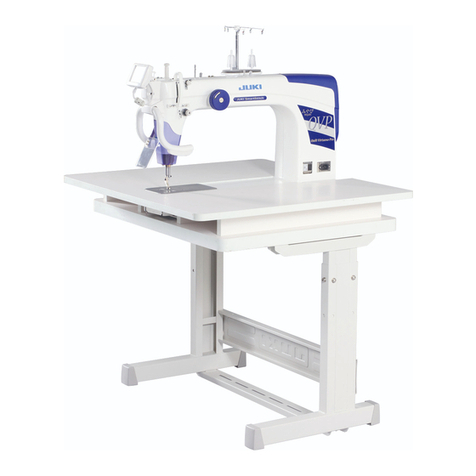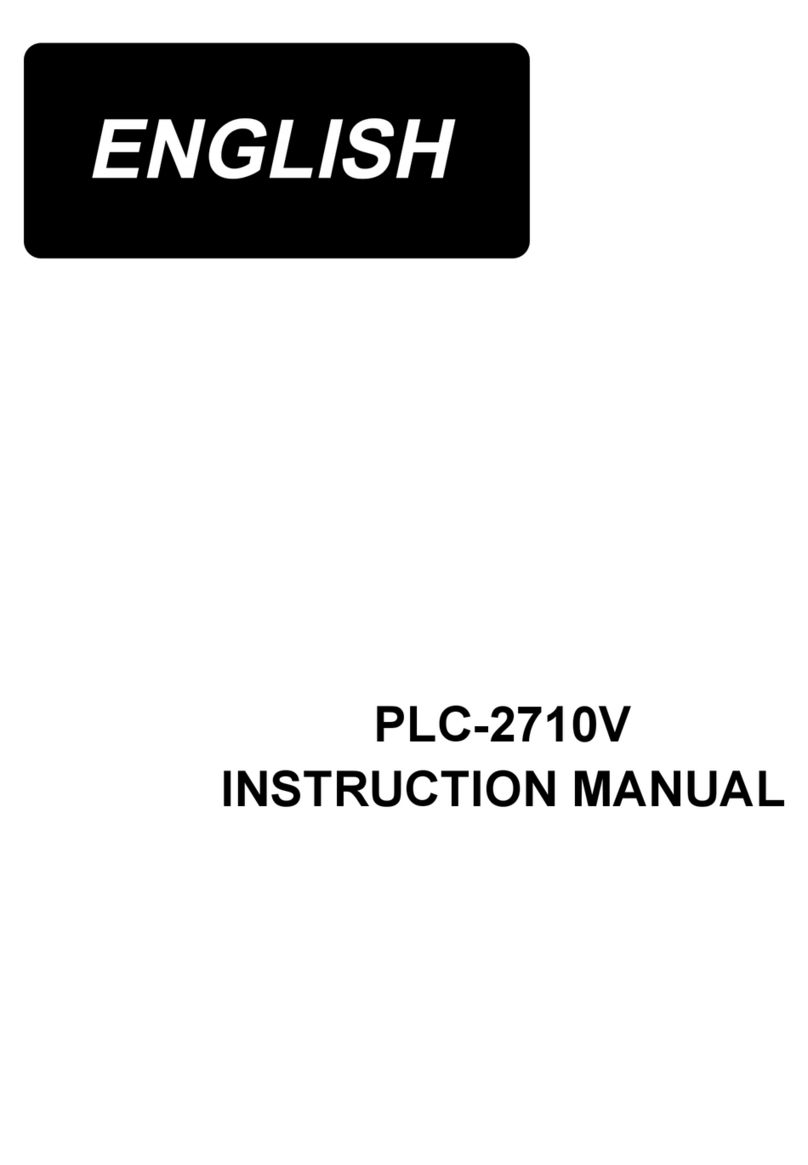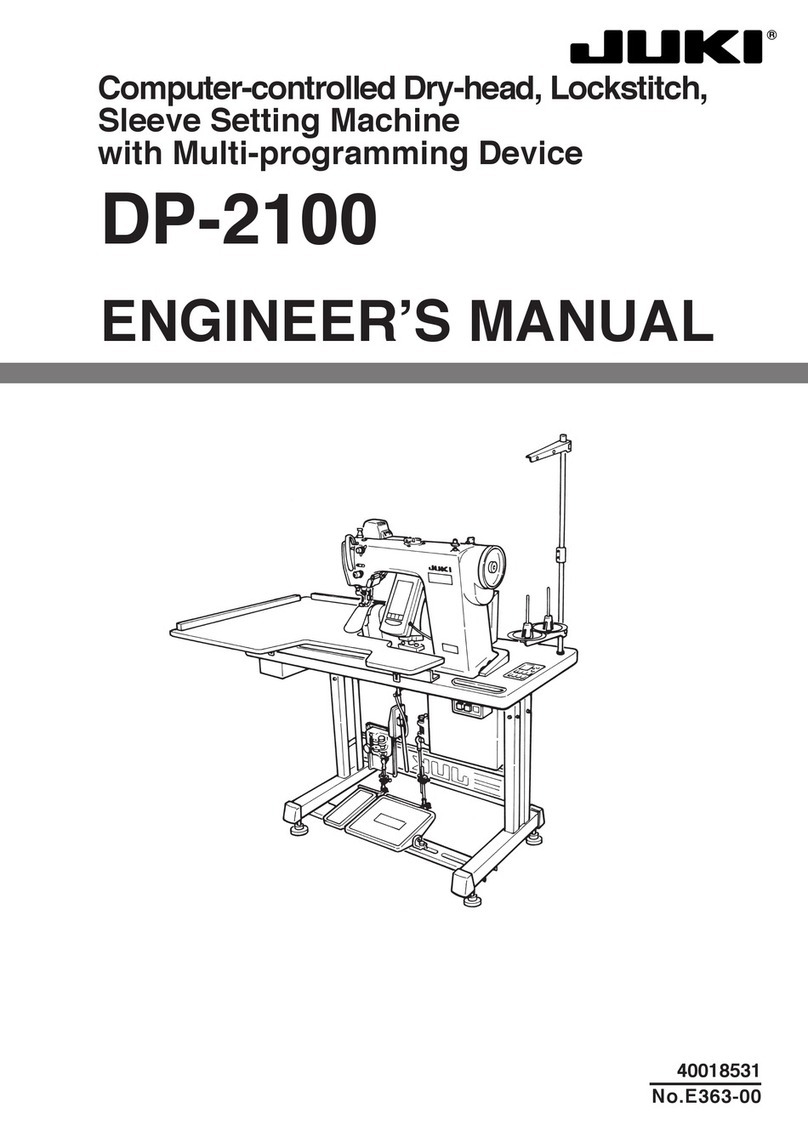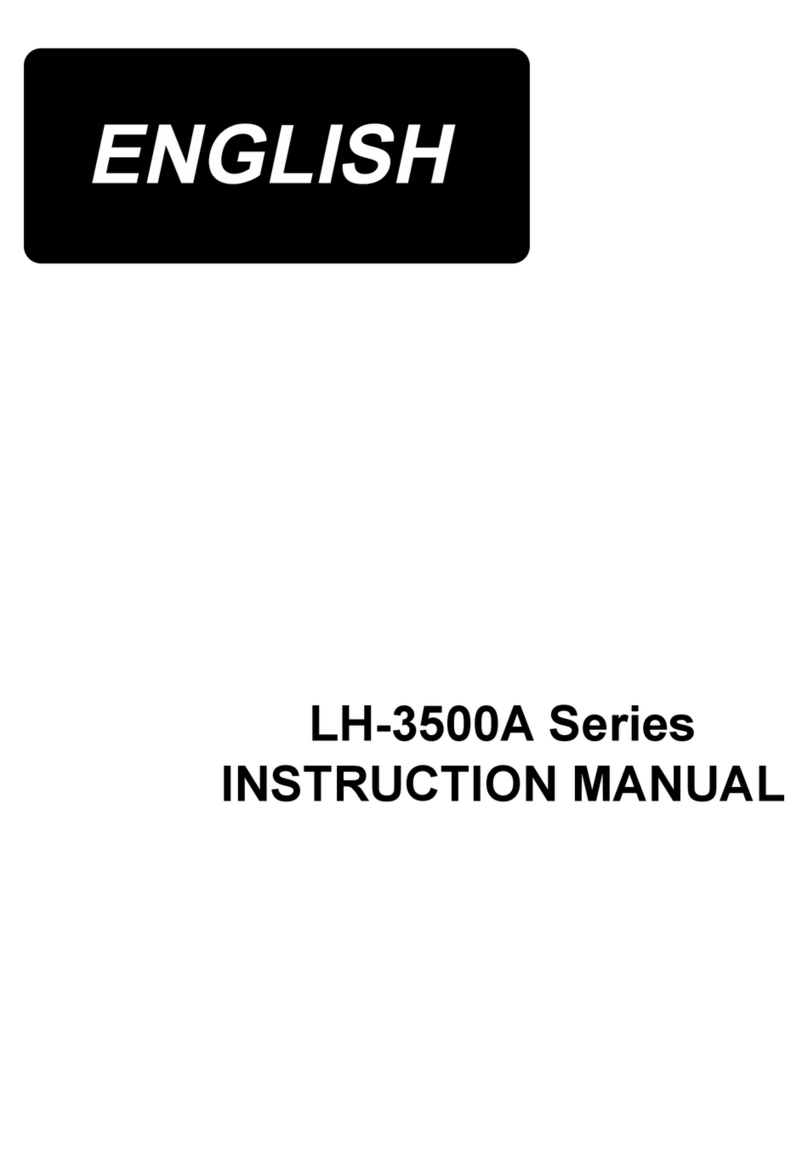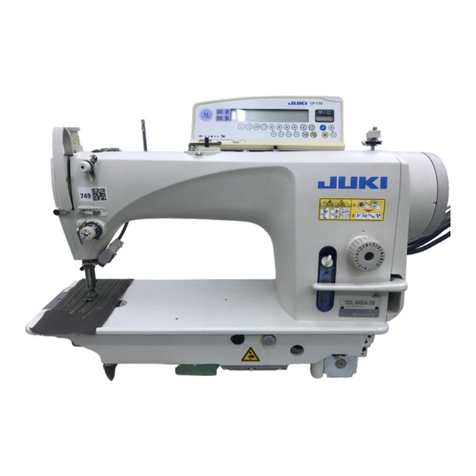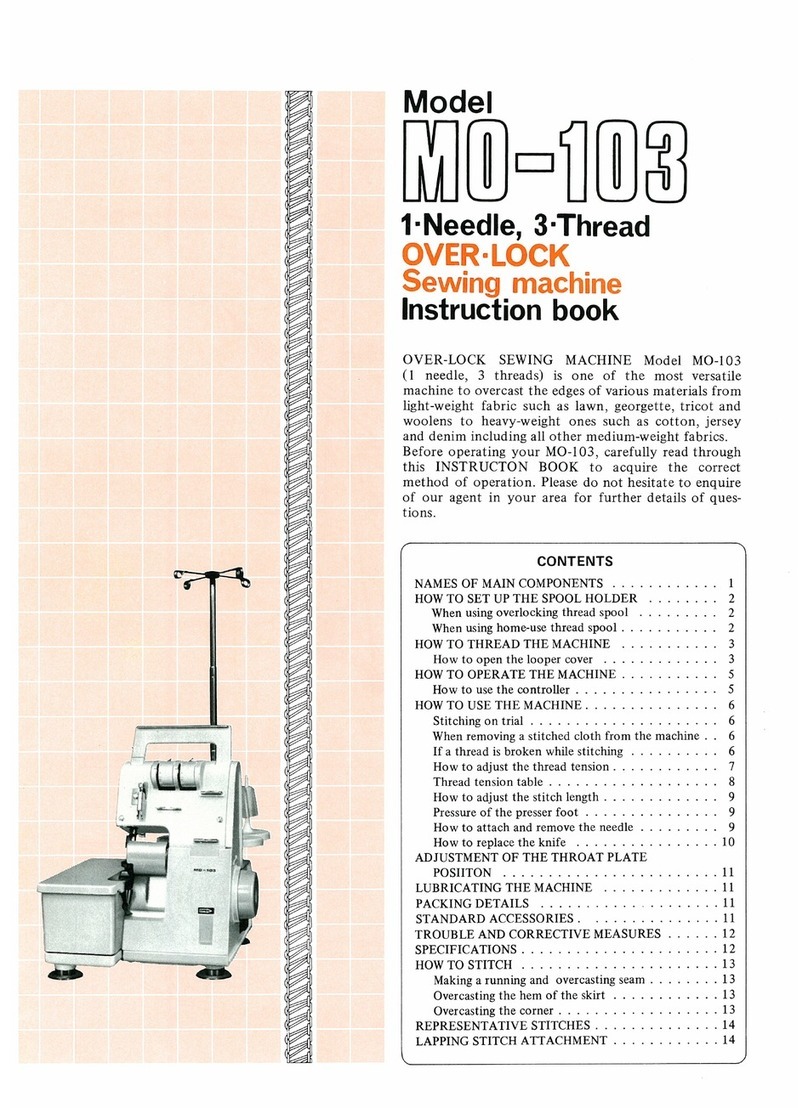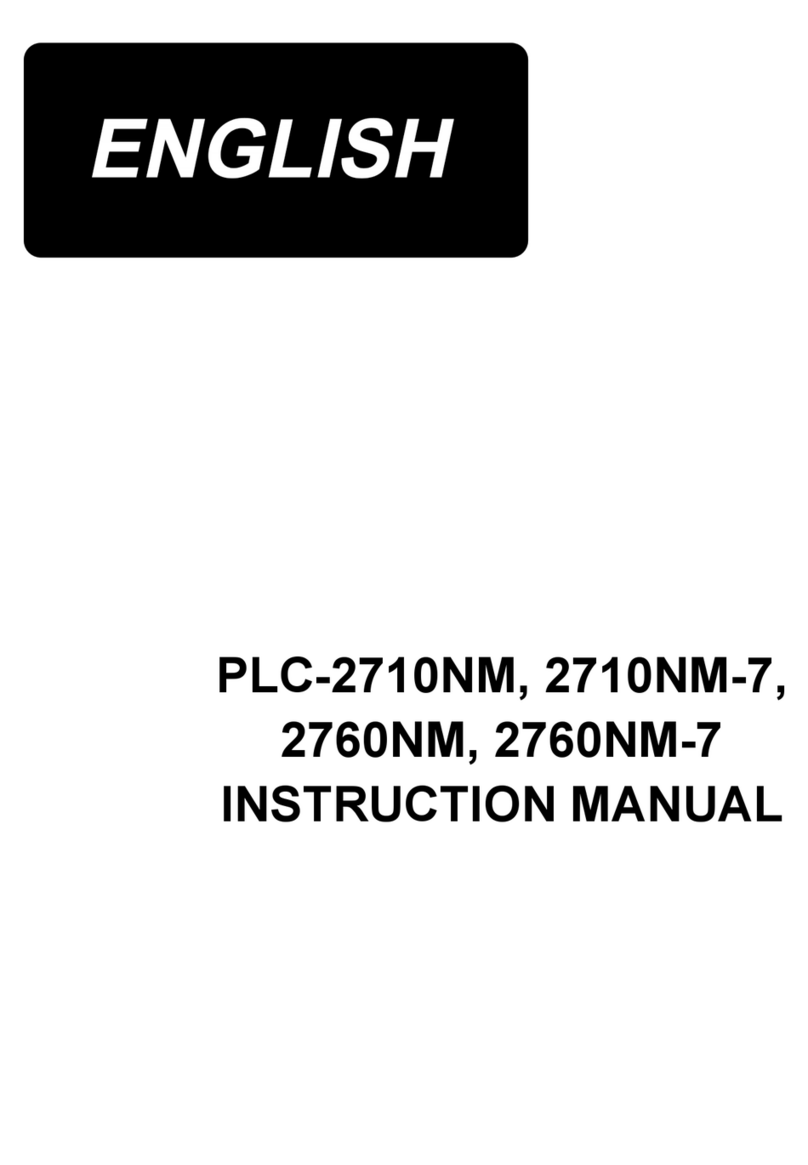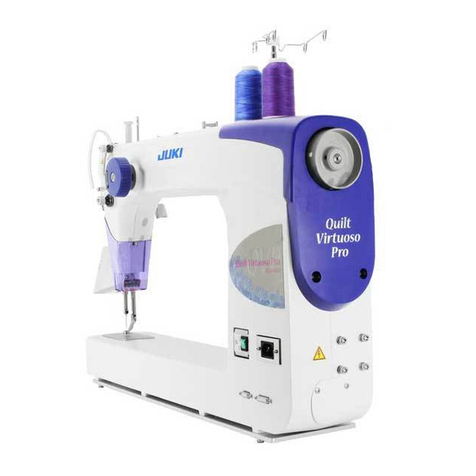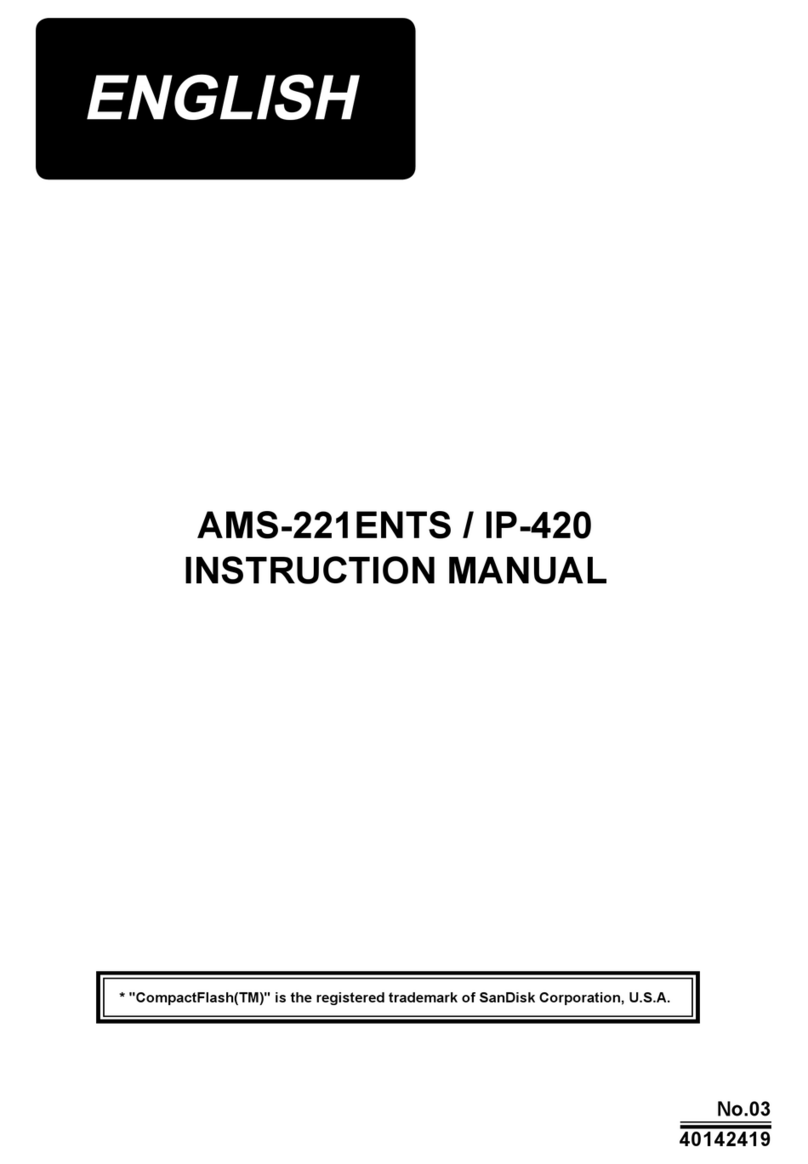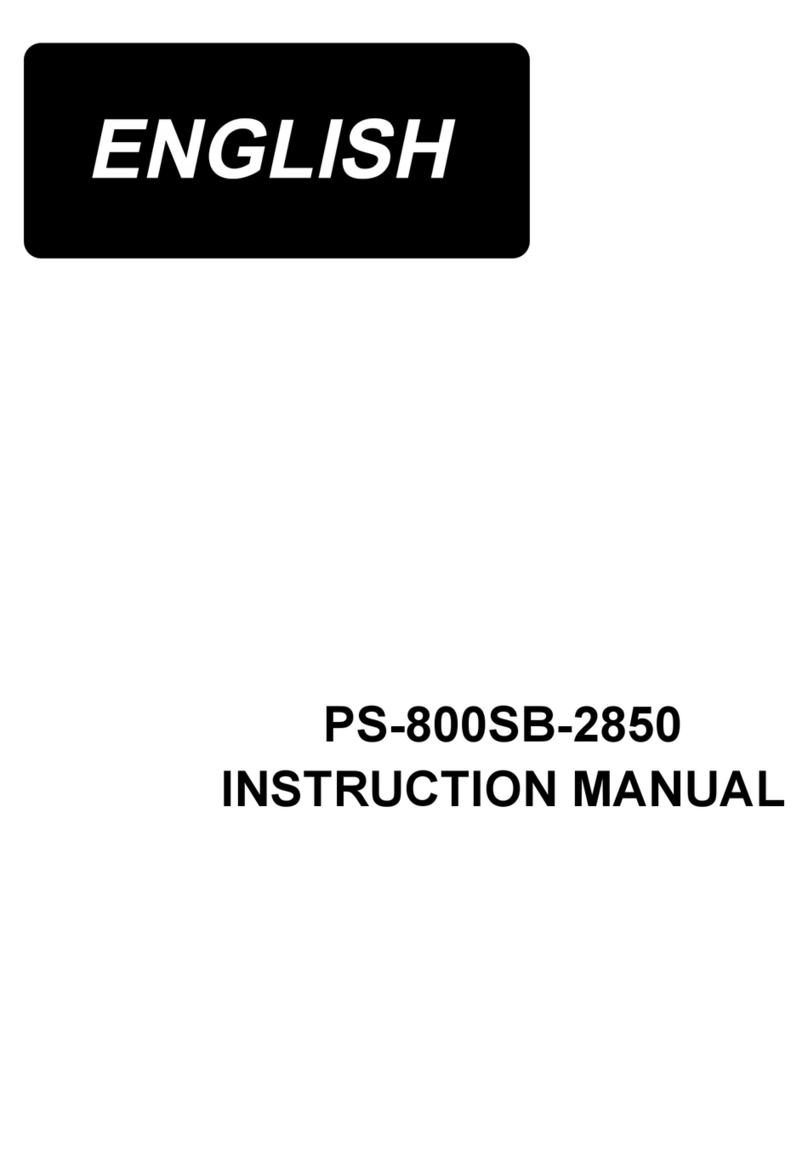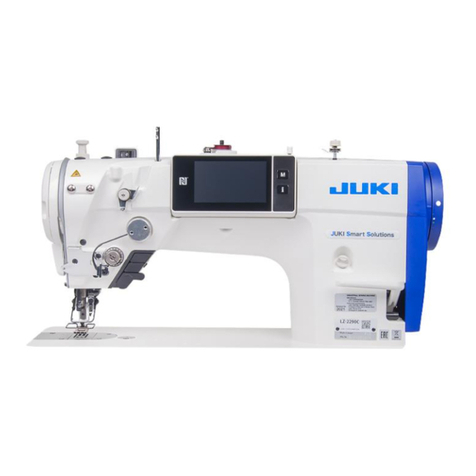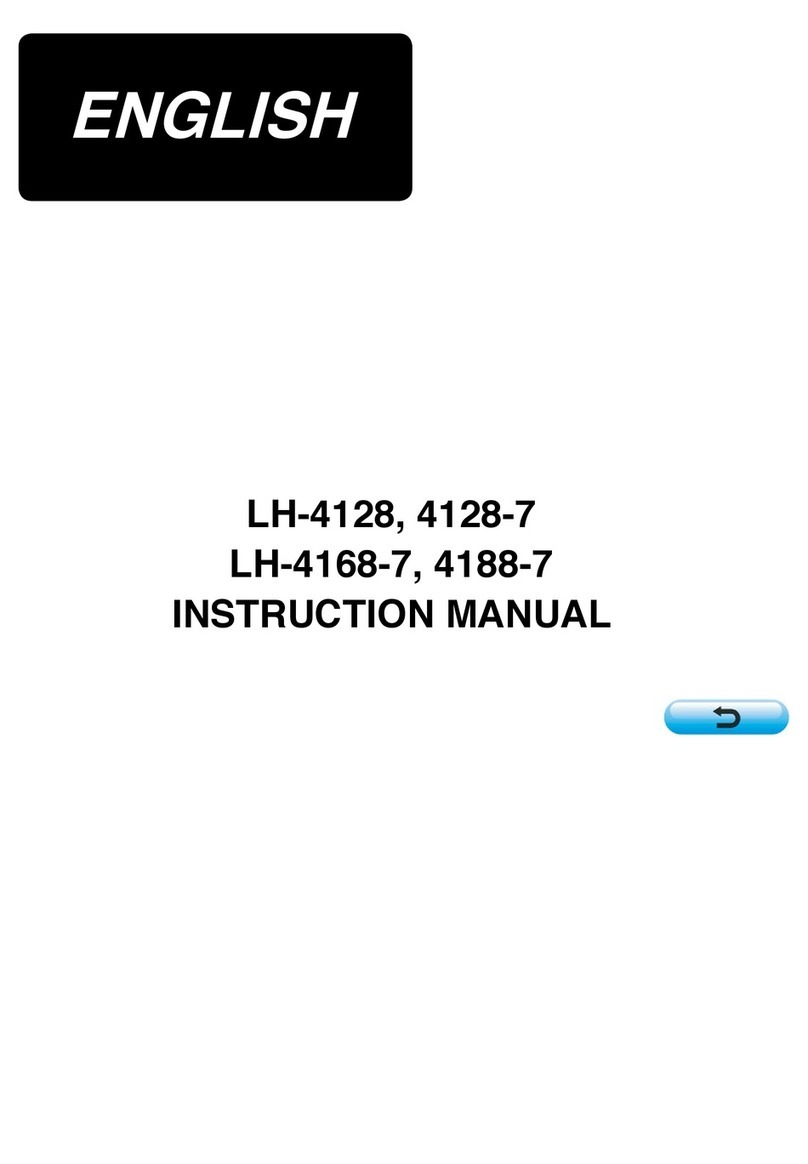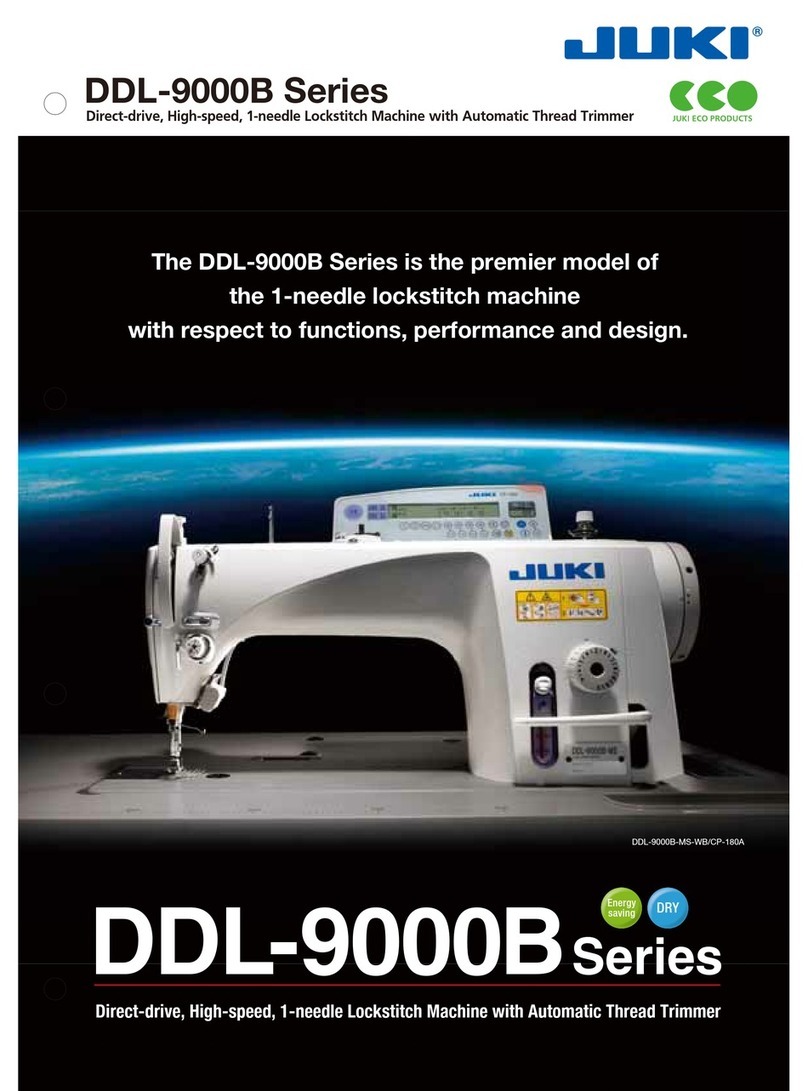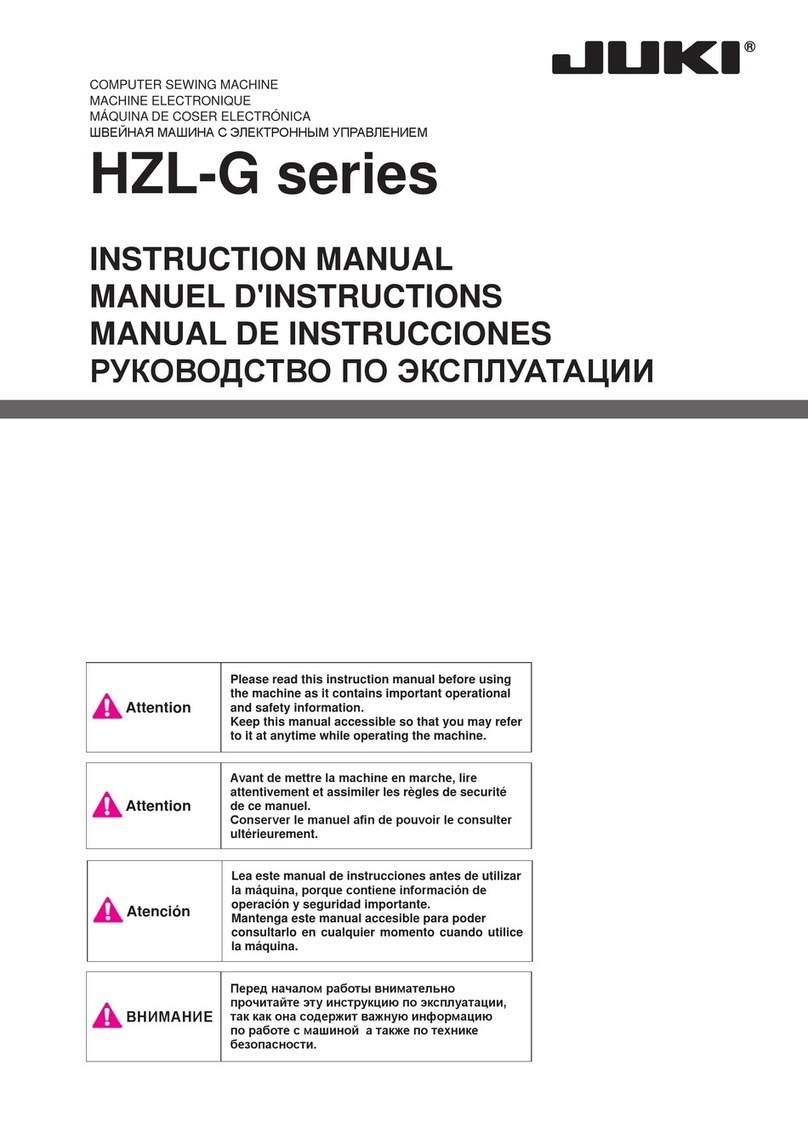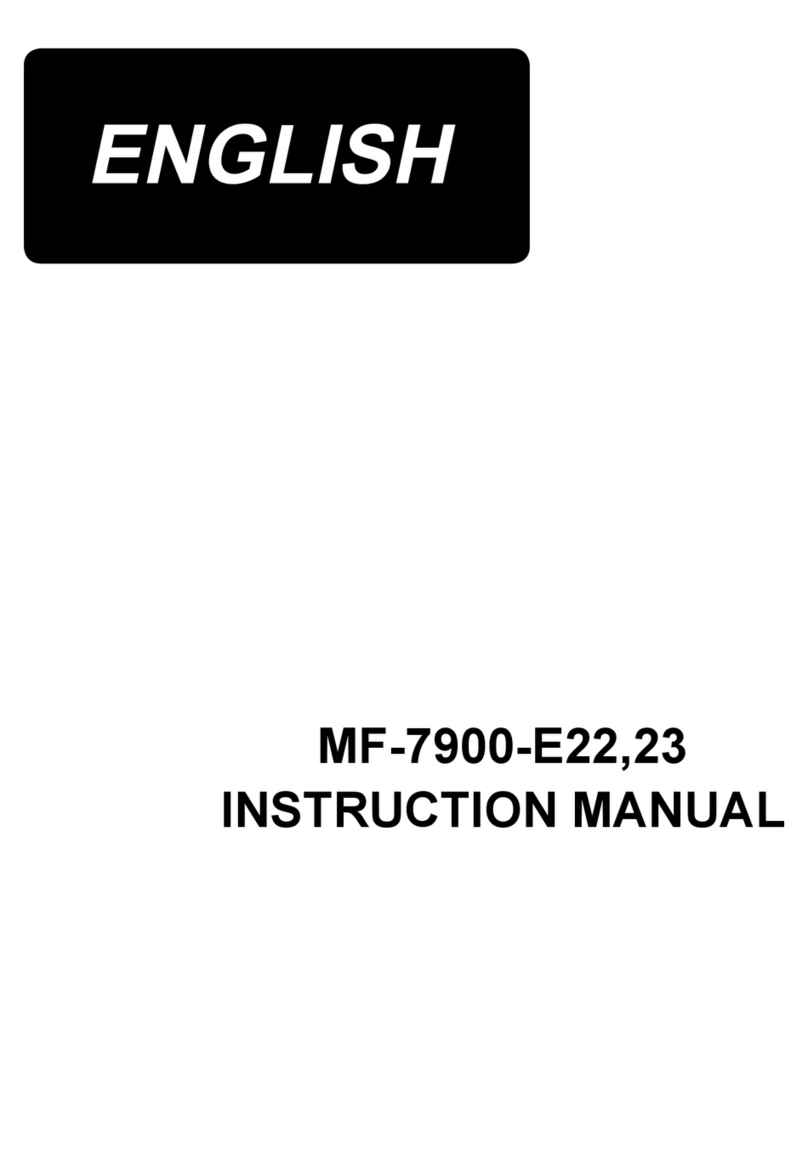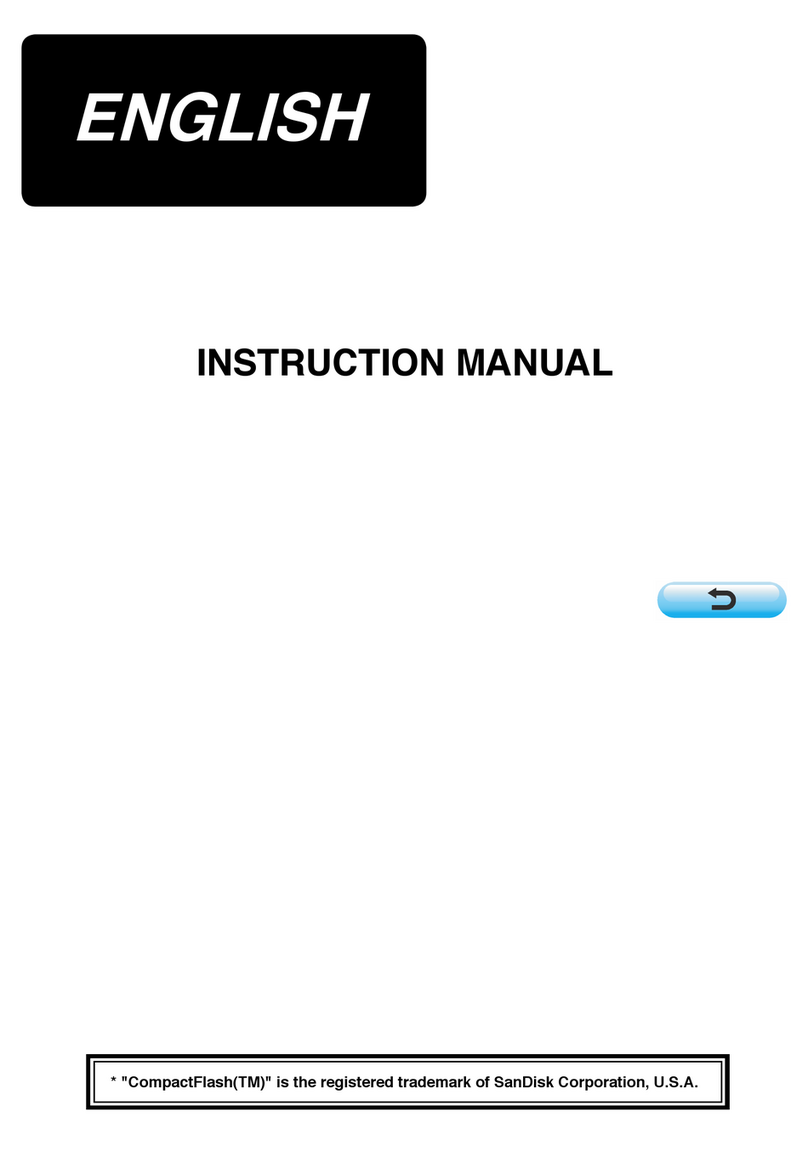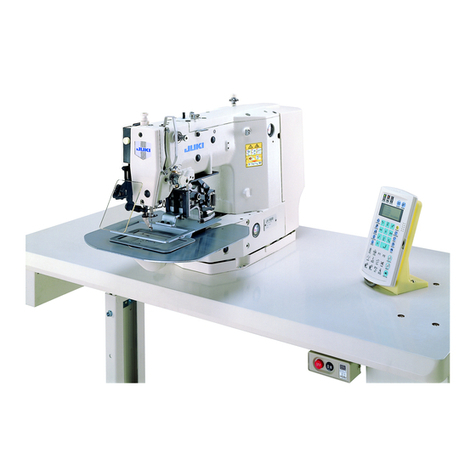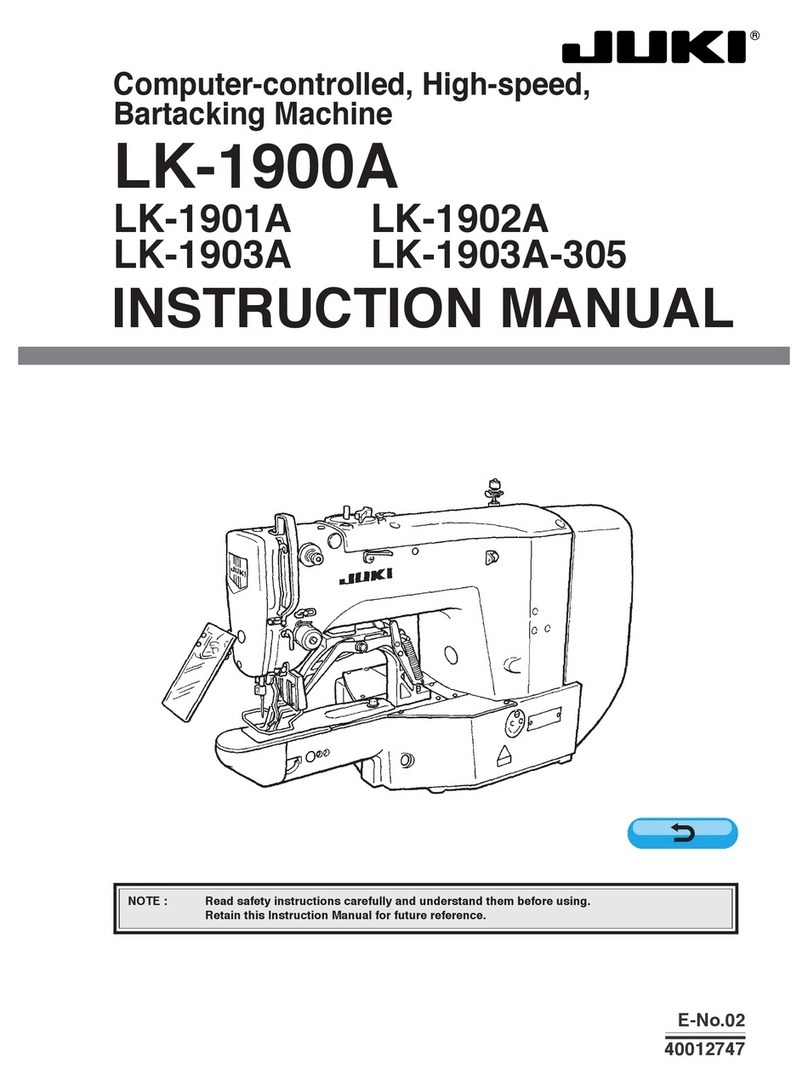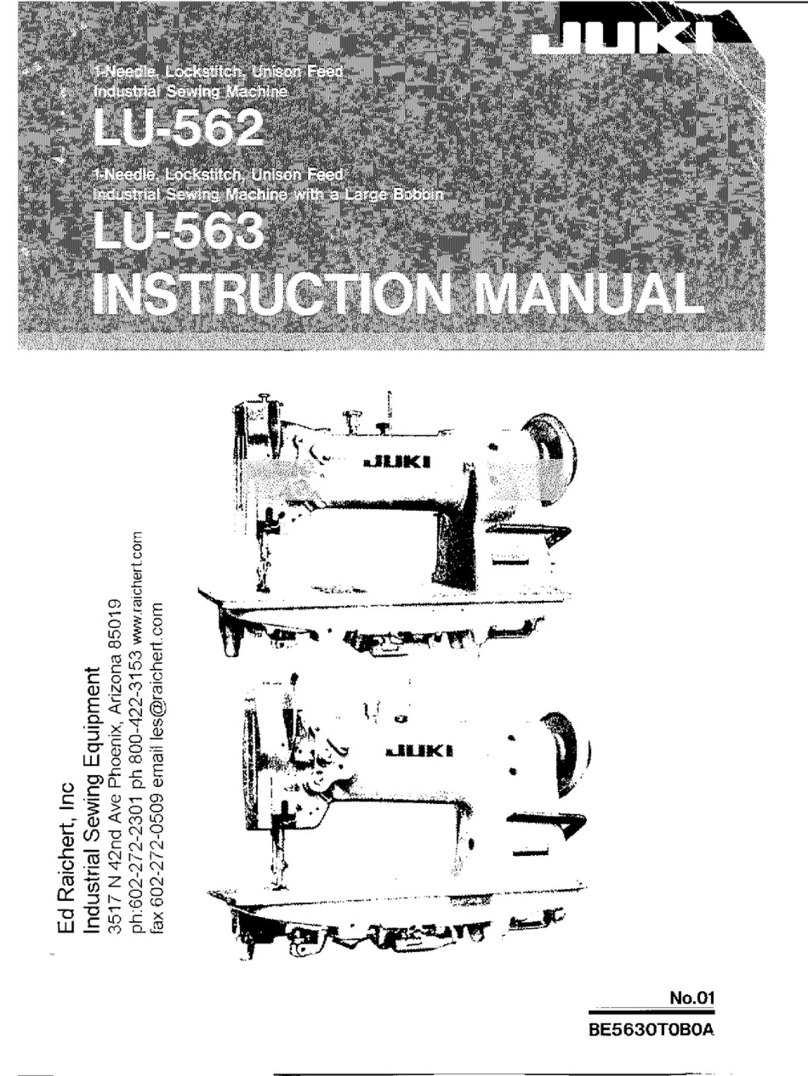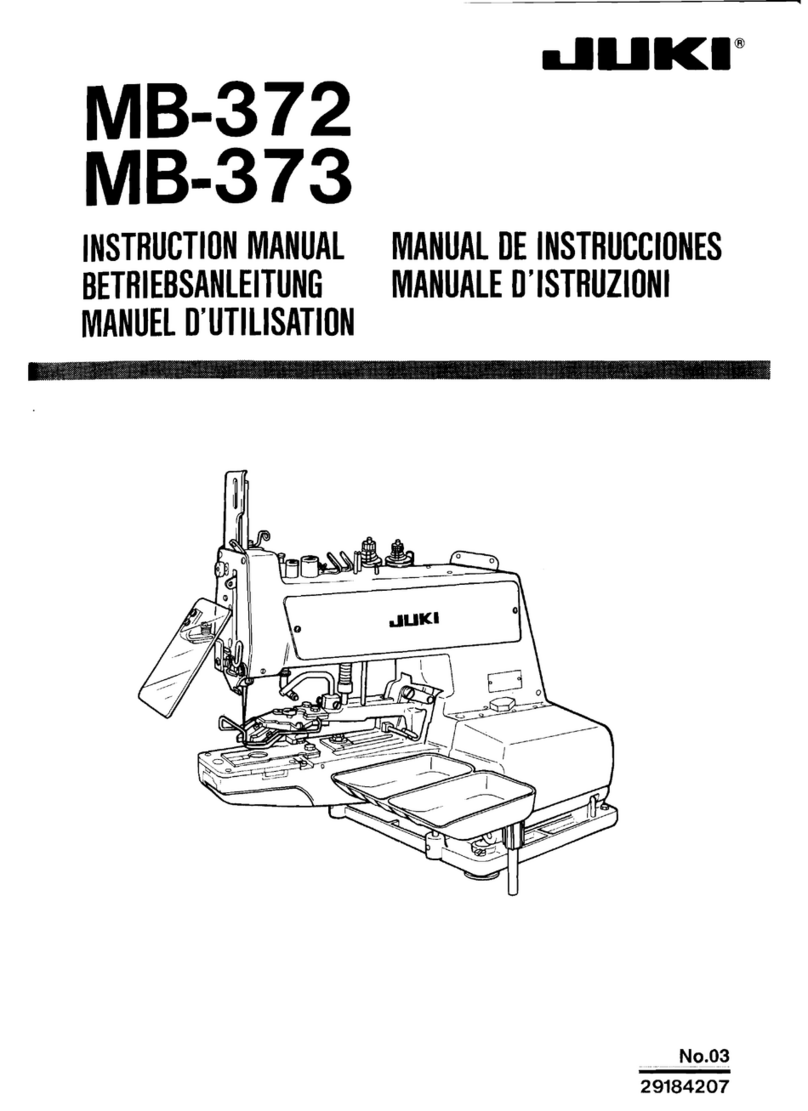CONTENTS
1. Specifications ........................................................................................................ 1
2. Configuration........................................................................................................... 2
(1) Names of main unit .................................................................................................................. 2
(2) IP-410 operation panel............................................................................................................. 3
3. Standard adjustment .............................................................................................. 4
(1) Adjustment of the throat plate auxiliary cover height......................................................... 4
(2) Adjustment of the feed bar auxiliary cover rail X ................................................................ 6
(3) Adjustment of the X movement top cover............................................................................ 6
(4) Main shaft connection/disconnection .................................................................................. 8
(5) Removal of main shaft motor and coupling....................................................................... 10
(6) Crank rod connection/disconnection ................................................................................. 12
(7) Crank balancer positioning ................................................................................................. 14
(8) Adjustment of intermediate presser cam ........................................................................... 16
(9) Adjustment of intermediate presser bar............................................................................. 16
(10)Intermediate presser variable connection /disconnection ............................................... 18
(11) Intermediate presser variable adjustments........................................................................ 20
(12)Intermediate presser drive arm ........................................................................................... 22
(13)Lower shaft backlash adjustment and connection/disconnection .................................. 24
(14)Oscillator gear positioning .................................................................................................. 24
(15)Adjustment of hook oil amount........................................................................................... 26
(16)Shuttle connection / disconnection and oil wick piping................................................... 26
(17)Adjusting the height of the needle bar ............................................................................... 28
(18)Hook adjustment................................................................................................................... 30
(19) Thread trimmer presser lifter cam connection/disconnection ........................................ 32
(20) Thread trimmer and presser origin sensor adjustment ................................................... 32
(21) Adjusting the thread trimmer sensor ................................................................................. 34
(22) Adjustment of the moving knife and counter knife position............................................ 36
(23) Floating amount of the thread tension disk ...................................................................... 36
(24) Second thread tension connection / disconnection......................................................... 38
(25) AT unit connection / disconnection.................................................................................... 40
(26) Wiper adjustment ................................................................................................................. 42
(27)Backlash adjustment for the X motor ................................................................................. 44
(28)Backlash adjustment for the Y motor ................................................................................. 44
(29)Tension adjustment for the X timing belt ........................................................................... 46
(30)Tension adjustment for the Y timing belt ........................................................................... 46
(31)How to remove rattles from the Y drive shaft .................................................................... 48
(32)Phase adjustment for the Y timing belt .............................................................................. 48
(33)Adjustment of the X-Y mechanism ..................................................................................... 50
(34)Pressure adjustment for the face plate bearing ................................................................ 52
(35)Initial length of the presser cylinder ................................................................................... 54
(36)Initial length of the 2-step stroke cylinder.......................................................................... 54
(37)Adjustment of the speed controller .................................................................................... 56
(38)Adjustment of the pressure reducer................................................................................... 58
(39) Making the origin setting gauge ......................................................................................... 60
(40) Adjusting the X origin sensor ............................................................................................. 60
(41) Adjusting the Y origin sensor ............................................................................................. 62
(42) Adjustment of the bobbin winder driving wheel position ................................................ 64
(43) Adjusting the bobbin winder amount................................................................................. 64
(44) Adjustment of the shuttle upper spring and lower thread holder position .................... 66
(45) Shuttle felt............................................................................................................................. 66
(46) Shape of the shuttle race ring.............................................................................................68
(47) Adjustment of thread take-up spring ................................................................................. 68
(48) Needle thread clamp device connection/disconnection .................................................. 70
